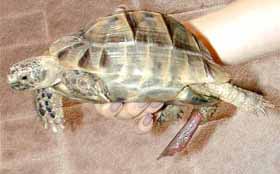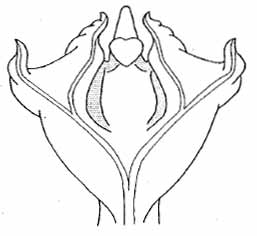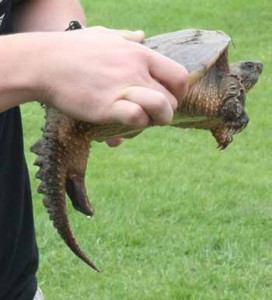Actually, penis diversity is not our business. In fact, one of the student evaluations for the Anthropology of Sex course I taught this past semester said I talked too much about animal diversity & not enough about humans. I’m not sure that is true for most of the students, but I do talk a lot about non-human primates, of course, & I also spent a little much time talking about animal penises (humans are animals, duh), though certainly not as much as I could or wanted to. Creeping you out yet?
Part of my graduate training was in Gordon Gallup‘s Evolutionary Psychology Lab. I joined because I was interested in Gordon’s groundbreaking work in comparative & experimental psychology regarding self-recognition in apes & monkeys. As a grad student, Gordon developed the mirror test for self-recognition & went on to develop an ingenious model of self-awareness based on that test. While Gordon still publishes on that topic now & again, by the time I arrived & for much of the past decade or so, his focus has really been on human sexual behavior. For instance, among his recent classic publications are, Does Semen Have Anti-Depressant Properties? (with Becky Burch & Steve Platek) & The Human Penis as a Sperm Displacement Device (also with Becky). My only experience of Gordon as an instructor is in one grad seminar & the labs, so I don’t know if he usually uses Powerpoint or not. In the seminar, data from study after study just rolls off his tongues with no slides, no notes, nothing (as I recall). So when Gordon gave the keynote at the first NEEPS conference in New Paltz, even those of us from his lab sat agog as he took us thru slide after slide of the most amazing penis presentation I have ever seen. What was so amazing was less the penises than Gordon’s totally straight delivery.
Anyway, though my own research has (arguably) not gone in this direction, it is tough to sit in on lab meetings week after week listening to such stimulating stuff (sorry, had to go there) & not get pulled in somehow. When I was hired on at Alabama, having the Gallup Lab experience on my CV led to the suggestion that I consider teaching a human sexuality course. It is the kind of course, the thinking went, that would get butts in seats, as it were. The development of that course, over the past 3 years, has been an effort to try to piece together my own set of mindblowing penis slides, without going too far off topic, to try to recreate the grandeur of the Gallup delivery (but I, for one, cannot help but snicker).
Therefore, lo, was I excited to see the new Scientific American blog post by Darren Naish, Terrifying Sex Organs of Male Turtles. I will not rehash the whole post, as you should read it & behold for yourself, though I will share a few choice quotes & photos. Alas, for the students who say there is too much about animals in my lectures–too bad (what, the vaginaplasty video wasn’t enough human genitalia for you?). And I will share a few of the other photos & drawings I’ve dredged up to generate some cheap oohs, ahhs, & ewwws.
Says Naish:
An intromittent organ of this sort is typically termed a ‘penis.’ Some researchers suggest that this term should be restricted to mammals & that the convergently similar organs of turtles & archosaurs should be termed phalluses instead (Isles 2009). However, others argue that there’s nothing about the term ‘penis’ that means it has to be restricted in this way, & indeed there’s nothing particularly special about the mammal penis when we compare it with the intromittent organs of other tetrapods. Accordingly, some biologists who publish on intromittent organs consistently term all of these organs penises (e.g., Kelly 2002, 2004, McCracken 2000).
Yes, there are folks who make animal penises their specialty. Much of Naish’s source material comes from UMass Amherst Biologist Diane Kelly, whose work is available for download at her website. Awesome!
Nash makes one statement with regard to seaturtle penises that I can’t agree with. He says,
Near the glas, they’re surrounded on both sides by fissures, or sinuses. Anterior & posterior pairs of sinuses are also present on the upper surface of the glans. These structures, associated with mobile skin folds, give the glans a decidedly alien-like, unfamiliar look to we primates.
This may true of most humans, but a survey of primate glans, as found in Dixson, indicates otherwise.

Penile length & complexity in primates is highly variable & relative to socioecology (from Dixson 2009)
A-H represent polygynous maters & I-N are multi-male/multi-female mating systems as follows: (A) purple-faced langur, (B) Thomas’s langur, (C) Hanuman langur, (D) Mona monkey, (E) Lesser white-nosed, (F) Sykes, (G) DeBrazza’s (H) patas, (I) common brown lemur, (J) squirrel monkey, (K) short-tailed macaque, (L) long-tailed macaque, (L) long-tailed macaque, (M) baboon, & (N), chimp (Dixson 2009).
In primates, a penile bone (os penis, os priapi, or baculum) is typical though absent in tarsiers, spider & wooley monkeys, & humans. Relative size varies due to taxonomy & copulatory pattern. Those with greater intromission times have greater lengths. There are multiple theories to explain the adaptive utility of the bacculum. It may assist in copulation when initial penetration is difficult, which might be due to sexual dimorphism or complexity of penis morphology. A baculum might assist in the maintenance of erection during prolonged intromission (however, spider monkeys have prolonged intromission without baculums) (Dixson 2009).
Not only do baculums assist most primates during intromission, but, like your common house cat, many also have penile “spines.” Penile spines may be androgen-dependent & provide tactile feedback to males, aiding in intromission. They could help prolong copulation by helping th penis “latch” in place. Or it may help with the removal of sperm plugs left by the preceding male sex partner. Or the spines may provide sensory feedback to females, increasing the chance of facultative reflex ovulation. They could be part of a lock & key fit to the female vaagina. Or they could be a species-isolating mechanism preventing interspecies hybridization, though there is little evidence for this. Or they could just be the result of sexual selection, because chicks dig spikes & leather on their cat-monkey-guy (Dixson 2009).
And for that matter, humans penises do come in more “alien” varieties than Naish is giving us credit for. At risk of reifying a long-gone ethnographic present, the classic drawing of Australian aborigine subincision compared to a bifid (kangaroo penis) does wonders for cleansing that palate.
So, speaking of ecology, according to Naish, diversity is relative (which is Gordon’s point about the shape of the human penis too, so his hypothesis of the human penis as a semen displacement device is worth considering in context).
In sea turtles, males have proportionally enlarged, prehensile tails, & the tails of other kinds of turtle are also unusally longer & bulker in males than they are in females. The cloaca isn’t situated at the base of the tail, but some along its length, so it seems that part of the distance that the penis needs to reach in order to inseminate the female is covered by tail-reach, not penis-reach alone.
Finally, male snapping turtles, apparently, get erections from simply being handled (well, that is not unusual). I used to own a pet snapping turtle, but apparently it was a female.
After this set of lectures, Stephanie Robinson, one of the students who takes University of Alabama biologist Ryan Earley‘s Animal Behavior course posted this video to our course Facebook group, which apparently they watched in class. It is comforting to know that I’m not the only University of Alabama professor educating your children by showing them animal penises. This is more a bizarre experiment (?) than penis, which demonstrates how to get a duck to become erect in a spiral test tube?
http://www.youtube.com/watch?v=bybYCwjkm_s
There is, of course, no lack of all this stuff all over the internet. You could waste a considerable amount of time composing lectures & collecting media about bizarre animal penises that you never ultimately use unless you find yourself blogging about animal penises. Not that I’ve done that. But speaking of things I’ve found when wasting time & haven’t found another excuse for sharing. The penis that comes OUT OF THE HEAD of the Leopard slug is probably the most cool-weird penis I’ve seen out there. Or maybe it’s a phallus. I’m not clear on the whole penis/phallus thing. Anyway, they are hermaphroditic, so they wrap their penises together while they suspend from a slime thread & do it, before plonking to the ground & going about their other business.
Finally (for now!), lest I seem phallocentric, the penises of the animal kingdom are not the only thing to come in many weird & wonderful sizes & shapes. While I don’t have quite the same (yet) in terms of an animal vagina photo collection (creepy!), I do have this spider monkey shot (Campbell 2010). The pendulous labia of the spider monkey female are longer than the spider monkey male penis (or is it a phallus?)…Hmm, try that on for size.









Pingback: 2012′s Cheap Thrills thru Evolution in Review | Welcome to the EvoS Consortium!
BTW, I did a quick Google search on “why don’t humans have baculums” & found my very own speculation on literally the very first item that popped up (Yahoo! Answers http://answers.yahoo.com/question/index?qid=20110717070807AAKpEoL), as well as this comment further down by “Lefty” that, sadly, does not link to any sources:
“The gene with the trait is turned off but present. Like our tails. Baculum in primates shows a decrease in size and importance (of the bone, not the organ), as compared to other species. There have been cases of humans born with genetic defect, the turning on the trait, and are born with a baculum. Both male and female.”
Nice blog, Dawn: http://sexandlove100.blogspot.com/ Hope folks are faring well in Woodstock. I just ducked out of my in-laws & a conference in New Paltz the day before, but everyone back there is less water-logged than my friends in the city. Nothing to do with the power out is a good time to bake chicken or contemplate the os penis (baculum). Gorillas & chimps have them (albeit small), so why not humans? First, we should note that ape penises have a lot of ecological relativity. Gorillas are harem maters & pretty much have no competition once they take over & correspondingly have the smallest of the great ape penises, smallest testicular weight, & lowest sperm count despite the largest body weight. Humans have the 2nd smallest average body weights but the longest penises of any great apes. This has been ammunition for speculation (by Gordon) that ancestral humans were even more promiscuous maters than contemporary ones & that the morphology of the human penis is unique & effective as a semen-displacement device (http://www.epjournal.net/wp-content/uploads/ep021223.pdf).
So gorillas & chimps having the os penis but not us is a bit of a puzzle. Richard Dawkins speculates that the reduced stamina of our erections versus ones with bones may be a product of honest sexual signaling, that erections are undermined by poor health, so female selection has favored the loss of a baculum. It’s a really interesting question. I’m going to speculate that it’s related to attraction, which would subsume a sexual selection model. Human attraction is somewhat unique in humans, I think. In the absence of visible signs of estrus & coupled with pair-bonding, females will favor evidence not just of health but evidence that a male is attracted to her. Attraction would be better potential evidence of commitment than simple willingness to have sex. This is consistent with Dixson’s theories FOR baculums, which include assisting in copulation when initial penetration is difficult (because of sexual dimorphism or complex penis morphologies) & assisting in maintenance of erection during prolonged intromission (however, spider monkeys have prolonged intromission without baculums).
U Albany graduate too! But you were a sperm or egg back then. Jim teseschi was my mentor. Loved your blog. I am retiring (soon) from teaching at a community college where sex discussion was banned. Anyway I have collected 600+ love stories written by men, wrote book with an evoutionary -psy bent. Os penis is quite interesting –human males have lost it. Have any ideas on this?
I still have my college blof sex and love 100@blogpot but I live in Italy 1/2 time and would see Gordon at grovery store In Voorheesville.
Great Article, will use some of these examples in my sperm competition lecture.
Pingback: Remember How I Said Blogging is Totally Rad? | Anthropology Blog Network
There are clubs of men in the USA who fully subincise exactly the same as Australian Natives, and for the same reasons: the exposure of much more erogenous tissue, more sexual feelings, and the ability to continue pleasure after climax. It enhances the manly power of the penis, similar to correcting an unretractable foreskin.
Sexual activity, time after time, programs the brain. The normal male pattern is about extending oneself. With subincision you experience external and internal at the same time. It blows your mind. Also it patterns the brain to know both outward and inward, expelling while receiving, and promotes the discovery of new dimensions of psycho-spiritual experiences.
Some even do it to make it very convenient for equal male-male sexual release and bonding, as did the Australians. This is not gay. No dominants and no submissives. Most guys are straight or bi.
I will be glad to erase the myths and tell you the truth about it. But I don’t want to be on the web. So email me. This is sacred and I don’t want it to be joked about.
Pingback: HBES Roundup: Brian Hare’s Chimp/Bonobo Cognition Plenary, Mommy Brain Fogs, & Baba Brinkman Evolution Raps | Welcome to the EvoS Consortium!
Haha, the turtle glans-blossom is way more freakish than anything in the primate order, but it gave me a semi-excuse to post funky stuff.
Hi – thanks for this write-up, I’m pleased that you found the article so interesting. On my comment about the ‘alien’ look of the turtle penis.. yeah, I know that there are other primates with spines, weirdly shaped glans and so on, and I know that humans in some cultures have modified their own penises in extreme ways, but – to my mind – it looks totally “wrong” for there to be great throbbing fissures and open clefts on the upper surface of a glans or on the adjacent shaft, surrounded by mobile flanges. This is _nothing_ like the setup seen in any primate, and in fact is so unusual to the majority of people that – on seeing a turtle penis for the first time – they often assume that the animal has had some catastrophic prolapse, and that they’re seeing part of the guts or something. Anyway, great article, and thanks for the kind words.